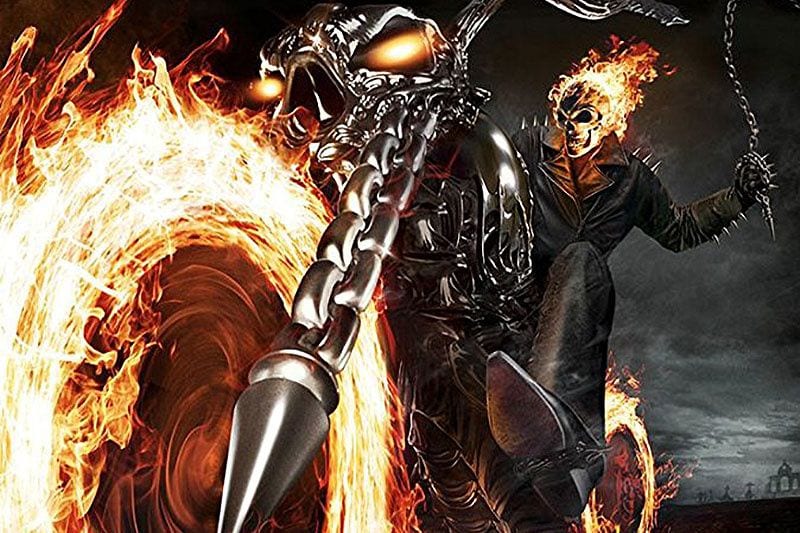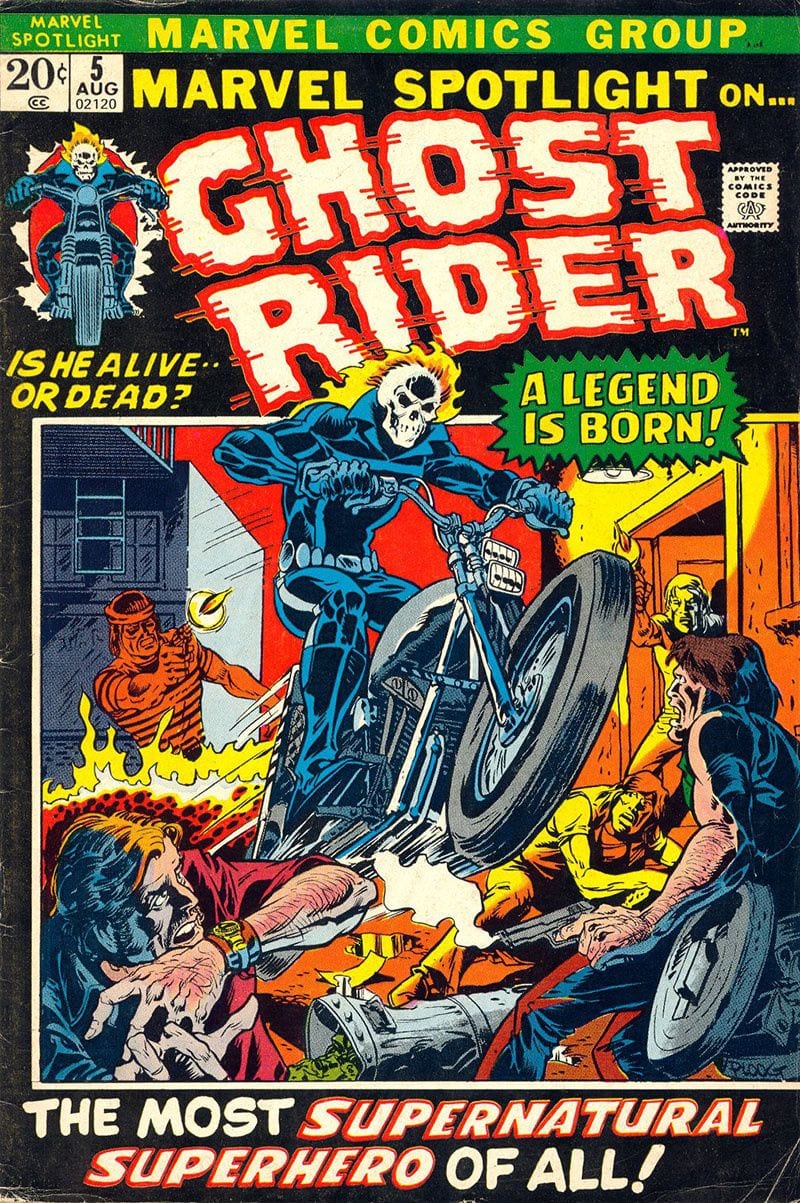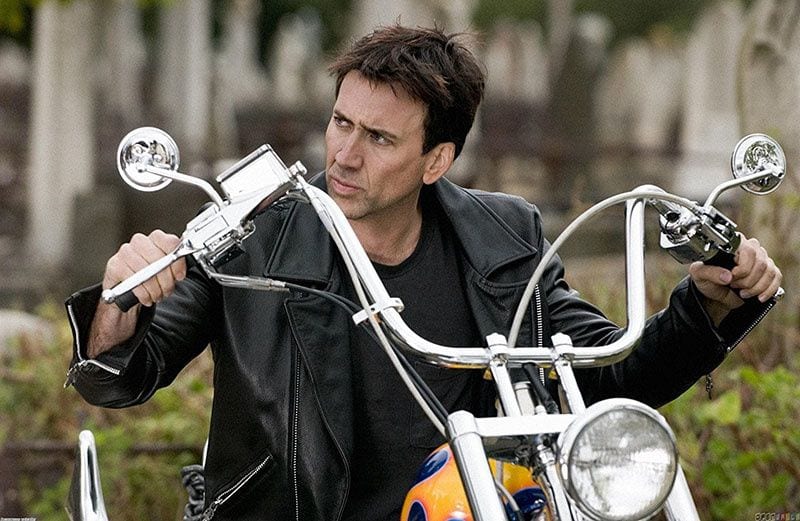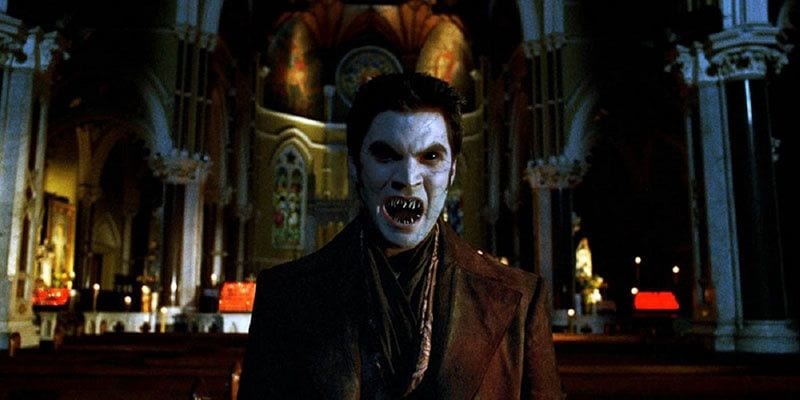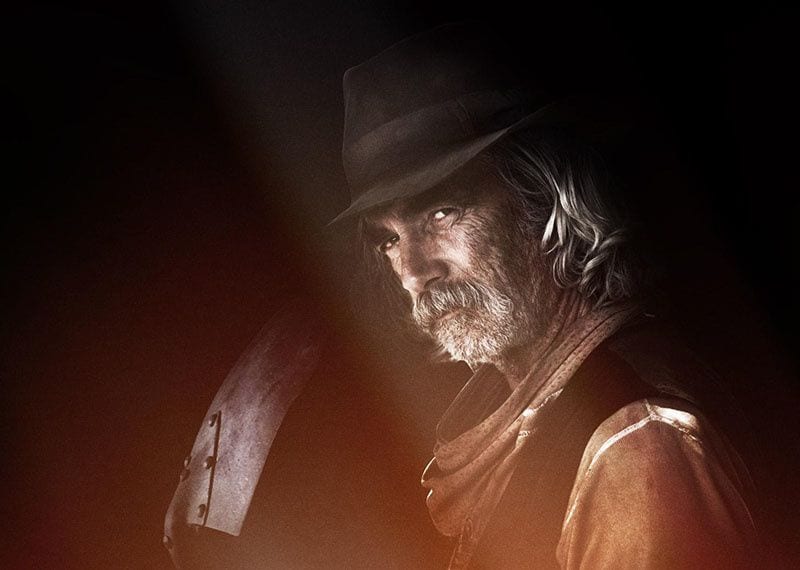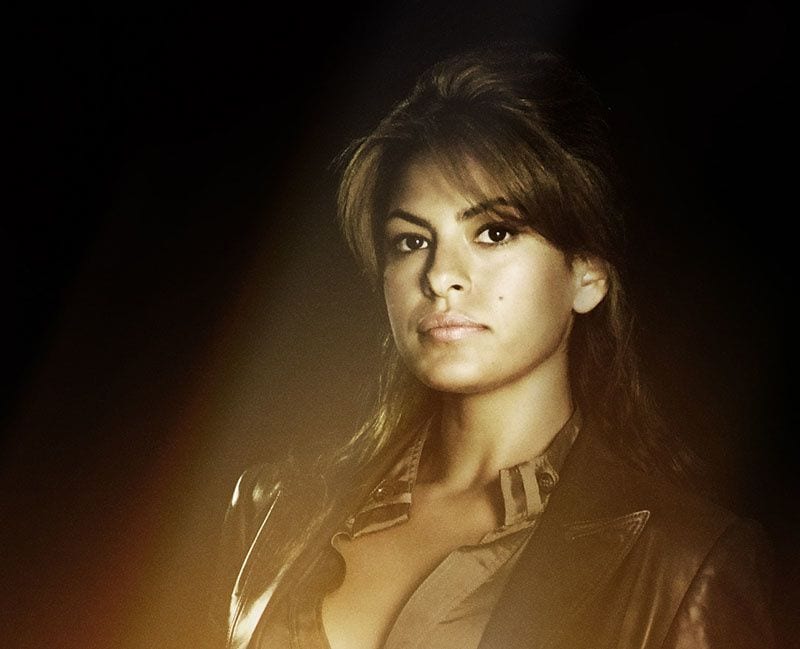
One of the admirable traits of Marvel Films is its willingness to take a risk by adapting lesser known characters. Until recently, Marvel’s closest competitor in the comics medium, DC Comics, has focused mainly on producing Batman and Superman films. The Marvel Films, on the other hand, began in earnest with Blade (Norrington, 1998), based on a character that even many comics fans were unaware of prior to the film. Granted, Blade came at a time when Marvel Comics was filing for bankruptcy, so licensing it may have been a ‘nothing to lose’ scenario. Since then, Marvel licensed its biggest properties (Spider-Man and X-Men), along with lesser known properties with name recognition (Hulk and the Fantastic Four), as well as properties that had experienced great success only within comics (Daredevil and the Punisher). The biggest properties had yielded the biggest hits, while some of the lesser known ones had enjoyed some surprising, moderate success. This approach would lead to one of Marvel’s biggest breakout successes when Iron Man (Favreau) launched the Marvel Cinematic Universe in 2008. But a little over a year before that, Marvel achieved some moderate success from another lesser known character with 2007’s Ghost Rider.
The closest analogue to Ghost Rider is Blade. Both are supernatural horror characters created in the first half of the ’70s during the boom in horror-related comics. Also, neither the Ghost Rider nor Blade characters ever experienced a true high point of popularity in the comics before or after their respective films. Although Ghost Rider and Blade have their fans, they are C-list Marvel characters through and through. Despite this, both Ghost Rider and Blade films were surprisingly successful and were granted sequels. Unfortunately, the comparisons end there. While Blade captured the pre-Matrix, late-’90s zeitgeist and overcame a modest budget to become a surprisingly effective trifle, Ghost Rider wasted a talented cast and much higher budget on a boring, generic, ugly-looking film that has been mostly forgotten.
Johnny Blaze/Ghost Rider first appeared in Marvel Spotlight #5 (August 1972), created by Roy Thomas, Gary Friedrich and Mike Ploog. A previous Marvel character named Ghost Rider was featured in a western comic which debuted in 1967 and only lasted seven issues. When the Johnny Blaze incarnation debuted and achieved some success, the original Ghost Rider was retroactively renamed the Phantom Rider. The ’70s Ghost Rider was clearly a character that began as a striking image, a demonic motorcyclist with a flaming skull for a head, and was then fleshed out into a character. Johnny Blaze is a stunt motorcyclist who sells his soul to the devil to save the life of his father. As a result, Blaze is inhabited by the demon Zarathos and becomes a “spirit of vengeance”. When sinners are nearby, Blaze transforms into a being made up of pure hellfire, complete with his distinctive flaming skull, and his motorcycle catches fire. Ghost Rider made enough of an impact to earn its own book in June 1973. Though the series occasionally attempted to explore some moral and religious depths inherent in the concept, it largely remained a horror-tinged superhero comic until the series ended with Ghost Rider #81 (June 1983), when the demon left Blaze’s body.
When comics took a darker, more violent turn in the late-’80s, however, Marvel saw the opportunity to revive the demonic vigilante. The character was reinvented with a new host, Danny Ketch, and the look and powers were upgraded to fit readers’ perceived taste for more “extreme” heroes. Ghost Rider now sported shoulder spikes, a fiery chain and a futuristic-looking motorcycle. He also gained a new power, the Penance Stare, through which he could cause sinners to experience all of the pain and suffering that their crimes had inflicted. Johnny Blaze soon returned to the series in a supporting role, but this volume of Ghost Rider was cancelled with issue #93 (February 1998) due to poor reviews and the changing tastes of comics readers. Blaze became Ghost Rider once again in a 2001 miniseries, and a continued in a third ongoing series, launched in 2006 as a lead-up to the film.
Although the early-’90s were likely the most popular time for the character, and discussions of a film adaptation date back as far as 1992, it never truly broke out as a character. As a result, however, the filmmakers of Ghost Rider may have felt free to cherry-pick elements from Daniel Ketch, Johnny Blaze and even the Phantom Rider for their interpretation of the character. Unfortunately, this freedom did not translate into a film with any passion or energy. In fact, Ghost Rider may be the dullest entry up to this point in the Marvel Canon.
The film opens with a cheesy, abstract prologue featuring a Phantom Rider-esque version of Ghost Rider being ordered by Mephistopheles (played by a sleepwalking Peter Fonda) to retrieve the film’s MacGuffin: the Contract of San Venganza, a list of a thousand human souls that can be used to take over the world. The Rider refuses to hand it over, and races away from Mephistopheles.
Many years later, Johnny Blaze (Matt Long) is a teenaged stunt motorcyclist in the circus alongside his father. Writer/Director Mark Steven Johnson heavily cribs from his earlier Marvel film, Daredevil (2003), in these scenes. Both films feature an absent mother and a gruff loveable father (here portrayed by Brett Cullen) pushing his son to be better, while keeping his own secrets. In both films the son arrives home to find his father passed out amidst cigarette butts and empty booze bottles littering the place, in spite of this, he longs to follow in his father’s footsteps. And, of course, it all ends in tragedy. In Ghost Rider, Blaze Sr.’s secret is that he is dying of an incurable cancer. Johnny is approached by Mephistopheles, who offers to cure Johnny’s father in exchange for Johnny’s soul. Of course, after Johnny agrees, his father is cured only long enough to die in his next stunt show. The move is particularly devilish and predictable, but that doesn’t make it any less mean-spirited. Johnny chooses to cut all personal ties, including abandoning his childhood love Roxanne (Raquel Alessi), and await his inevitable servitude.
With the backstory complete, the film jumps to the present day to meet the adult version of Johnny Blaze, portrayed by Nicholas Cage. Cage is a longtime, well-documented comic book fanatic, having taken his stage name from the Marvel Comics character Luke Cage to avoid the appearance of nepotism from his famous uncle, Francis Ford Coppola. Cage came close to playing Superman in the aborted Tim Burton film Superman Lives in the late-’90s, so it was nice to see him finally achieve his dream of starring in a superhero film. Sadly, Cage doesn’t seem too outwardly excited in his fairly lethargic performance. He does at least imbue Blaze with a hint of nervous energy, and the filmmakers made an interesting choice to present him as a man who regrets making an enormous mistake in his youth, and chooses to test his boundaries and with increasingly outlandish stunt jumps on his motorcycle. But the burden of Blaze’s curse never truly comes across from Cage’s performance. He exhibits some charm, however, when Roxanne re-enters his life. Roxanne, portrayed by Eva Mendes, is a journalist covering one of Johnny’s jumps, and he takes her reappearance as a sign that he may not be doomed after all.
But, of course, he is very doomed. The main villain of the story, Blackheart (Wes Bentley), son of Mephistopheles, emerges on Earth, intent on acquiring the Contract of San Venganza and overthrowing his father. He is joined by three elemental demons, and the movie takes a turn for the terrible. Up to this point, Ghost Rider is a benign, slow-moving film with a hint of cheesiness. Blackheart and his gang are easily the worst part of the story, and their emergence causes it to nosedive. The hint of cheesiness earlier in the film were bits such as flashes of a demonic visage morphed onto Fonda’s face, or a lightning strike changing Johnny’s reflection in a bus window to a skull. The demons, however, feel like they are straight out of a less-than-average television fantasy show, complete with subpar visual effects to depict their powers. Their introduction is full of these horrible effects, choppy editing and annoying vocal effects. Not to mention some of the worst, most clichéd villain dialogue ever.
Blackheart appears randomly in a desert, finds a nearby bar, and massacres everyone inside for no good reason. A lack of strong villain motivation is the hallmark of the most terrible blockbusters and, thankfully, many superhero films have made strides to move past the villains that are evil for the sake of being evil. I suppose it’s technically appropriate for a being from Hell to have no motivation beyond chaos and evil, but it makes for a deathly boring character. Bentley, so promising in his breakout performance in American Beauty (Mendes, 1999), gives such a flat, uninteresting performance here. Several years later, Bentley spoke very openly about his decade-long struggle with drug addiction and his tendency to take roles only to earn money to buy drugs. The production of Ghost Rider, sadly, falls right into that difficult period for him. It’s clear he is not giving it his all. It’s a shame that Fonda and Bentley are so subdued, as characters like Blackheart and Mephistopheles cry out for big, flamboyant performances. When done well enough, these types of performances can buoy the rest of the film, or at least make the film more fun. Sadly, the lack of strong, charismatic villains contributes to the low-energy of Ghost Rider overall.
Blackheart’s associates also make almost no impact beyond their cheesy fantasy trappings. They are introduced primarily by their one-note elemental powers, earth, wind and water, and are later trotted out one at a time for Ghost Rider to defeat. In between those encounters with Ghost Rider, the villains seem to putter around the world, with no tangible drive or motivation.
With Blackheart posing a threat, however lackadaisical, Mephistopheles finally calls up his debt from Johnny, changing him into the Ghost Rider to protect his position. This establishes a very interesting moral quandary, with Johnny being used as a tool to protect one evil villain from, arguably, an even worse evil villain. The film seems to have no interest in exploring the inherent complexity in the situation, however, as the Ghost Rider mostly does what Mephistopheles wants, while Mephistopheles disappears until the end of the film. Johnson seems to take some pleasure in slowly evolving the character into its fullest expression. Ghost Rider gradually acquires the character trademarks: his chain, his transformed motorcycle, the Penance Stare, and the shoulder spikes. Unfortunately, the nature of Ghost Rider himself remains frustratingly undefined.
Blaze lived for 20 years in fear after selling his soul to the devil, and yet he never actually became Ghost Rider in all of that time. So, he knows he is in trouble, but has no idea what the nature of his curse is. Of course the audience knows he will eventually turning into Ghost Rider, but Johnny not knowing saps his motivation. His fear and regret seems superficial when there has been no sign of trouble for decades. When he finally becomes Ghost Rider (in the only, truly “Nicholas Cage” moment of the film), Johnny Blaze seems to be taken over by the demon, and Johnny no longer seems in control. Ghost Rider and Johnny, thus, feel like two distinct characters. It’s difficult for audiences to know whether to root for Ghost Rider, a demon carrying out the devil’s will, or root for Johnny to be rid of the curse. Also, after a single outing as Ghost Rider, Johnny does a bit of research and immediately manages to control and summon his alter-ego. From nothing for 20 years to total mastery of his curse after one-night strains credulity even in a film about a flaming-head motorcycle demon.
Cage does very little to sell the anguish of the curse catching up to him. He seems to gain full acceptance of his fate at the same time he masters his powers. Johnny receives some help from a cemetery caretaker (Sam Elliott) who is revealed to be the still-alive Western Ghost Rider from the prologue. The caretaker seems to have retained his Ghost Rider powers, but not used them in the century or more that he has hidden from Mephistopheles. The rules of the Ghost Rider curse are inconsistent and not well thought out. When filmmakers seem to care so little about their world-building, it’s difficult to care about the film.
Furthermore, Blackheart seems to have as little understanding of Ghost Rider’s abilities as everyone else in the film, which is odd, considering Ghost Rider is his father’s chief mercenary. Blackheart seems amazed/confused by Ghost Rider’s abilities in their first confrontation. Then, he sends his associates after Johnny one at a time. Each of these confrontations play out identically: Ghost Rider is attacked, he’s initially thrown off balance, then he quickly recovers to use his powers in a newfound, ingenious way to quickly dispatch the demon. The fights are all slowly-paced and lackluster, with absolutely zero weight or suspense. There’s never a doubt that Ghost Rider will emerge victorious. The fact that it always involves a heretofore unseen ability each time seems like a lazy cop-out.
So, what should be the most exhilarating moments of the film, Ghost Rider’s scenes, are constantly undercut by the fact that no characters in the film, nor filmmakers behind the camera, seem to have a clear concept of who Ghost Rider is or what he is capable of. There at least needs to be a consistent internal logic to these concepts, and it seems completely absent from Ghost Rider.
Finally, Blackheart personally captures Roxanne to lure Johnny to San Venganza with the contract. The caretaker immediately decides to give the contract he has hidden for over a century to Johnny (a man he just met) then disappears to (I suppose) heaven. Why does he trust Blaze so readily? None of it holds much weight, nor does it seem to matter.
Before discussing the climax, it’s worth examining Roxanne: the quintessential thankless female love interest role. Although Eva Mendes tries her best, the character checks so many toxic, one-dimensional boxes that her efforts are hopeless. Roxanne is a smart, focused career woman? Check. She loses all skill and professionalism when faced with the male protagonist? Check. She wants to support him (check) and has totally moved on emotionally (check), but not-so-secretly wants to be with him (check). She’s the only one who can get through to him, the only one he can tell his secret to, and that puts her in mortal danger simply to motivate him. In the end, she loves him so much, even enough to let him go. Does Roxanne have her own internal life/goals/desires? No, she does not. Does she have any definition beyond Johnny Blaze? Of course not. In the film’s most painfully unenlightened scene, Roxanne gets increasingly drunk at a restaurant waiting for Johnny, not knowing that he is transforming into Ghost Rider for the first time. Her “hilarious” emotional crumbling culminates when she grabs the waiter and asks, “You think I’m pretty, don’t you?” It’s awful. Roxanne has no life outside of Johnny, apparently, and bases her entire self-worth on her looks. In other words, to some male filmmakers, she is the ideal woman. In the commentary, Johnson states that he wrote Roxanne to be the audience surrogate, which clearly demonstrates how much disdain he has for the audience.
Perhaps worst of all is the ages of the actors portraying the roles. As teens, Johnny and Roxanne are portrayed as only a couple of years apart and, in fact, the younger actors are only three years apart in age. Fast-forward to the present day and 41-year-old Nicholas Cage romances 31-year-old Eva Mendes. Because, of course, a 40-something actor cannot have a 40-something actress as a love interest. And so, Ghost Rider does excel in one area: old-school Hollywood misogyny.
In the film’s finalé, Blackheart absorbs the thousand souls of San Venganza, then fights Ghost Rider. Absorbing the souls somehow makes him susceptible to the Penance Stare, however, and once again Ghost Rider easily defeats a villain with his endless supply of powers. Just then, Mephistopheles appears to congratulate Johnny, and offers to return his soul, allowing Johnny and Roxanne to be together. But no, who cares about Roxanne? Johnny declares he will remain the Ghost Rider in order to fight Mephistopheles. This threat seems incredibly hollow and short-sighted. Johnny has spent his entire two-day career as Ghost Rider following Mephistopheles’ will. Does he even know if he can disobey? If he does disobey, couldn’t Mephistopheles simply remove the powers? It would make sense that Mephistopheles would have a fail-safe, seeing as he created the Ghost Rider and gave Johnny the powers. The dull thud that you hear is the ending of Ghost Rider.

Ghost Rider is an unabashedly cheesy B-movie, complete with over-the-top music cues, poor visual effects, choppy editing, and showy camera moves. But it’s also an incredible bore. For a film about a motorcycle demon, it seems to have no engine or energy. Nothing seems to be urgently driving the plot, things just seem to happen in their own time. Writer/director Mark Steven Johnson states in the commentary that he intended the demon effects to be cheesy to really sell the B-movie trappings, but there’s no joy to be found in the presentation. He seems to have stripped down the Ghost Rider concept to its most generic incarnation, perhaps to appeal to mass audiences. He also continuously points out in the commentary places where he inserted moments of levity to temper the darker, more unsettling elements of the character. After researching his experience making Daredevil, where his dark R-rated original film was butchered to hew closer to the Spider-Man model, it’s not surprising that he lost his nerve with Ghost Rider. Rather than let a supernatural, horror-tinged character lead the story, Johnson made a film so devoid of character and energy that it has been forgotten by most audiences, and thankfully so.
Despite its many flaws, however, Ghost Rider made over $115 million in North America and nearly $230 million worldwide. As a result, it managed to score a sequel, Mark Neveldine and Brian Taylor’s Ghost Rider: Spirit of Vengeance (2011), which is something that Daredevil, Hulk, The Punisher and Elektra had all failed to do in the years before. This once again demonstrated that even a C-list Marvel character could find success on film under the right conditions. If only it had been a better film.

Stan Lee Cameo Corner: No sign of Stan here. That leaves us at seven Stan Lee cameos in 14 films.
Next Time: The Spider-Man franchise begins its sharp, downward trajectory as Sam Raimi’s trilogy ends in disaster.

